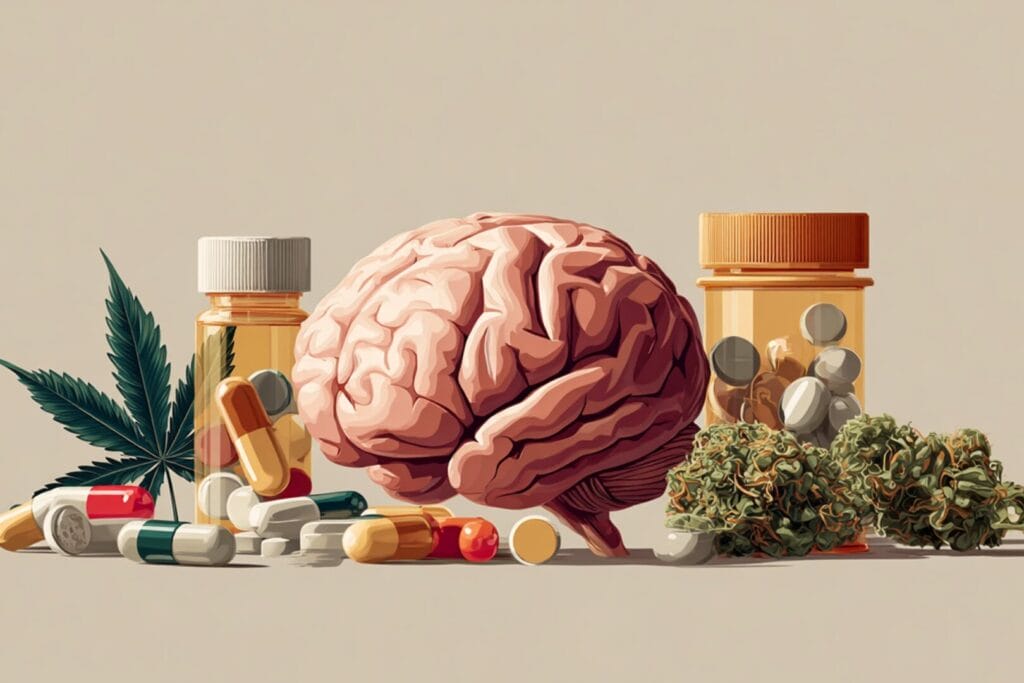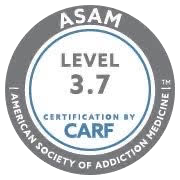Opioid withdrawal is a difficult but necessary part of the recovery journey if you’re struggling with addiction. When you stop using opioids after a period of being dependent on them, your body is probably going to struggle to adjust to functioning without drugs. It leads to a range of withdrawal symptoms varying in duration and intensity. The withdrawal process can feel daunting, and it is often one of the biggest barriers to overcoming opioid addiction.
The discomfort and distress of withdrawal can lead you back to using opioids to get relief. With that being said, at San Diego Detox, we understand the complexities and challenges of opioid withdrawal and provide programs to help maintain your comfort and safety.
What Happens with Opioid Dependence?
Opioid dependence is something that occurs when your body is adapted to opioids being present regularly. You come to a point where you physically rely on them for normal functioning. Over time, as you use opioids, your body acclimates to their effects. You might need higher doses to get the same impact.
If you’re physically dependent and stop using opioids, you’ll go through withdrawal symptoms. These symptoms are the result of your body struggling to adjust to the absence of opioids.
When you use opioids, whether prescription pain medicines, heroin, or fentanyl, your natural production of dopamine can decline. Opioid receptors in your brain might be less responsive, and your body starts to physically depend on opioids. Without them, your brain and body are in a state of imbalance.
Opioid dependence is primarily a physical condition, and it’s not the same as psychological addiction. That’s a term describing the behavioral and emotional parts of drug use. A psychological addiction indicates you have a compulsive, out-of-control urge to use opioids even though they’re causing harmful consequences.
While the two conditions usually occur together, they aren’t the same, and the combination of both makes overcoming opioid addiction more complex and requires a comprehensive treatment approach.
Opioid Withdrawal Symptoms
Symptoms of opioid withdrawal can include:
- Anxiety and agitation: Opioids calm the brain. With the drug’s removal, the brain is overstimulated, leading to agitation.
- Muscle aches: Without opioids, the body’s pain signals can get overactive, leading to aches and pains.
- Sweating and goosebumps: The autonomic nervous system controls temperature regulation and sweating. During withdrawal, it’s dysregulated, leading to these symptoms.
- Nausea, vomiting and diarrhea: Opioids slow the gastrointestinal system down. When they’re removed, it can speed the system back up.
- Insomnia: Taking opioids disrupts natural sleep patterns, and without the drug, the body can struggle to regulate sleep, causing insomnia.
- Dilated pupils and runny nose: These symptoms again stem from the autonomic nervous system. During withdrawal, the body overcompensates, causing the pupils to dilate and increase secretions, leading to eye tearing and a runny nose.
- Rapid heartbeat and elevated blood pressure: Opioids depress the central nervous system, including your heart rate and blood pressure. Removing the drug can lead to a rebound effect, increasing both heart rate and blood pressure.
- Depression and cravings: Taking opioids elevates dopamine levels in the brain, causing euphoria. When the drug is removed, dopamine levels can drop. That can result in depression and strong cravings as your brain is working to restore the sense of reward.
Understanding why symptoms occur can help you prepare for withdrawal and seek the appropriate medical support to manage them.
What Does the Opioid Withdrawal Timeline Look Like?
The general timeline can include the following stages:
Early Withdrawal (6-12 Hours After the Last Dose)
For short-acting opioids like oxycodone and heroin, early withdrawal symptoms usually start 6-12 hours after they’re last taken. For long-acting opioids like extended-release formulations or methadone, these symptoms might not begin for around 30 hours after the last dose.
Early symptoms include agitation, restlessness, muscle aches, anxiety, and a runny nose. Yawning and insomnia are also common during this time.
Early opioid withdrawal symptoms can be similar to a severe flu.
Peak Withdrawal Symptoms (72 Hours After the Last Dose)
Peak symptoms usually occur within 48-72 hours after the last dose for short-acting opioids, and for long-acting drugs, it can be three to five days after the previous dose.
Common peak symptoms include nausea and vomiting, abdominal cramping and diarrhea. Goosebumps, dilated pupils, elevated heartbeat and blood pressure are also possible. You might experience intense cravings, depression and irritability.
This phase can be the most intense and challenging, and the risk of relapse is especially high.
Late Withdrawal Symptoms (4-7 Days After the Last Dose)
For short-acting opioids, symptoms usually start subsiding after around five to seven days, and for longer-acting opioids, it can be ten days or longer.
Late-phase symptoms include anxiety, fatigue, weakness, irritability, mood swings and depression, as well as continued opioid cravings.
Most intense symptoms will start fading, but you could still have lingering emotional and physical discomfort.
Some people will have post-acute withdrawal syndrome (PAWS) for weeks to months after the last dose. These symptoms might include depression, fatigue, emotional instability and ongoing cravings.
Factors affecting your withdrawal timeline include the type of opioid you often use, the duration and dosage and your individual health.
Treating Opioid Withdrawal
The most effective treatment approach for symptoms of opioid withdrawal involves a comprehensive and supervised detoxification process. At San Diego Detox, we offer medical supervision and support. Medical professionals monitor your vital signs and provide medicines to help with symptoms, reduce cravings and prevent complications. Medications like buprenorphine and clonidine, for example, can help the detox process.
Counseling and therapy can be integrated into the detox process to address the psychological elements of withdrawal.
A safe, comfortable environment is critical to detox; we offer around-the-clock care.
Every person’s opioid dependence and withdrawal experience will be unique, so individualized treatment plans are necessary. We design plans to address specific needs such as the type of opioid used, duration of use, and co-occurring mental conditions.
If you’d like to learn more about detoxing at our center, which fosters a supportive and compassionate atmosphere, please contact us anytime.
Frequently Asked Questions (FAQ)
Opioid withdrawal occurs when someone who has developed a physical dependence on opioids — such as prescription painkillers, heroin, or fentanyl — suddenly stops or reduces use, causing the brain and body to struggle to function without them.
Common symptoms of opioid withdrawal include anxiety, agitation, muscle aches, sweating, goosebumps, runny nose or watery eyes, nausea, vomiting or diarrhea, insomnia, dilated pupils, rapid heartbeat, elevated blood pressure, depression, and intense opioid cravings
The severity and duration of opioid withdrawal depend on multiple factors: the type of opioid used (short-acting vs. long-acting), how long and how heavily opioids were used, dosage, and whether other substances or mental health conditions are involved.
After the most intense withdrawal symptoms fade — typically after the first week — some individuals may experience ongoing emotional or physical issues such as mood swings, fatigue, depression and cravings for weeks or even months; this is often referred to as post-acute withdrawal syndrome (PAWS).







